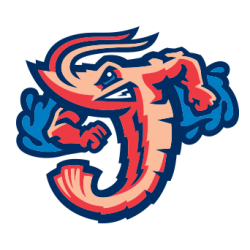How to Bond with Your Bearded Dragon
Potential owners of bearded dragons sometimes worry that lizards will be tougher to bond with than other types of pets. In reality, though, bonding is very achievable: these lizards can develop close relationships with their owners, making it possible to play and interact with your pet, and even train them to respond to basic commands.
Nervous about how to bond with your bearded dragon? Here's everything you need to know about these surprisingly social creatures.

Are Bearded Dragons Social?
In nature, bearded dragons are social creatures that live in groups with others of their own species. While they're known for being highly territorial and aggressive toward one another, this is a product of the rigid social order in which they live.
As pets, bearded dragons behave differently. Owners are discouraged from forcing bearded dragons to live together because of the risk of fighting between them. While these lizards are better off in isolation when captive, they do tend to form a bond with their owners once they develop a sense of trust for that individual.
Do Bearded Dragons Like to Be Held?
Once they learn to trust their owner, many bearded dragons enjoy being held, and they will stay in an owner's hold for long periods of time without trying to get free. The trick is making sure you create an environment that puts bearded dragons at ease, which means trying to avoid potential triggers that might increase their anxiety or fear of being attacked.
When properly held, your bearded dragon will enjoy the different texture of your arm as compared to other surfaces in its habitat, as well as the different vantage point offered by your embrace.
How to Pick Up a Bearded Dragon
When you approach your bearded dragon to pick them up, never approach from the top. The nerves in a bearded dragon's head are sensitive to movement coming from above or behind them, and if you approach them from an angle where they can't see you, they might worry they're being attacked and react aggressively.
Instead, approach your bearded dragon from the side or from directly in front of them, so they can see you come in to pick them up. Place one hand under the bearded dragon's chin to support their head and upper body. Most of the time, the dragon will grip onto your forearm to support itself.
Place your second hand underneath the animal's stomach. Once lifted up, you may choose to lay your dragon alongside your arm, giving your dragon a perch they can hold onto. As you lift, reposition, and return the bearded dragon to its terrarium, move slowly to avoid startling the animal.
Do Bearded Dragons Like Baths?
Even though they're adapted to living in dry climates, bearded dragons can enjoy, and benefit from, occasional baths in water. Bathing can support good hygiene and help your dragon stay hydrated, since many of these lizards will drink the water in the bath.
Because of the likelihood of drinking this water, you shouldn't use soap to bathe the animal. Instead, fill a tub or basin with a small amount of warm water and let the bearded dragon get comfortable in that space. While it might be enough to let the dragon get wet and move around a little on their own, you can also clean them by gently scrubbing a soft-bristle brush onto their skin. But don't apply pressure, and don't use soap, as both can potentially injure your bearded dragon.
Can You Train a Bearded Dragon?
While lizards can't be trained to the same level as dogs or other pets, you can still train your bearded dragon to respond to simple commands, or to come to you when called in their habitat.
Bearded dragons can learn their names and respond when called after just a few weeks of training. In most cases, food is the incentive bearded dragons need to be trained. As your expertise in owning a bearded dragon grows, you may even be able to train them to go to the bathroom in a specific area of their habitat, improving their hygiene and making it easier to clean up after them.
What Do Bearded Dragons Like to Play With?
Simple toys can provide a lot of stimulation for your bearded dragon. Small balls, water floaties, tunnels, and cat wands are just a few of the toys and features that offer an outlet for bearded dragons to play alone, or for owners to interact with their dragons.
Try out different small toys and see what your pet shows an interest in. Over time, you can mix up the toys to keep your pet entertained and engaged.
Signs Your Bearded Dragon is Happy
Reading a bearded dragon's emotional state is tougher than with other pets. But there are still signs you can use to get a sense of whether they're happy. Here are some signs you can look for:
- They don't run away when you try to hold them. This indicates trust, as well as a desire to be held.
- They stay in your arms. When bearded dragons are happy being held, they'll stay in your embrace. When they start trying to crawl out, that means they want something else.
- They don't act out aggressively. Aggression is usually a sign that they're afraid or upset.
- They play with toys. Play is a good indicator of a bearded dragon's happiness.
- They come when called. If you train your dragon to respond to commands, their obedience is another indicator that they're happy—otherwise they would likely ignore your calls.
While bearded dragons offer a much different relationship from dogs and cats, owners can still develop close bonds and enjoy many similar types of interactions as other pets. The more attention you pay to your bearded dragon, the more you and your pet will get out of your relationship.


